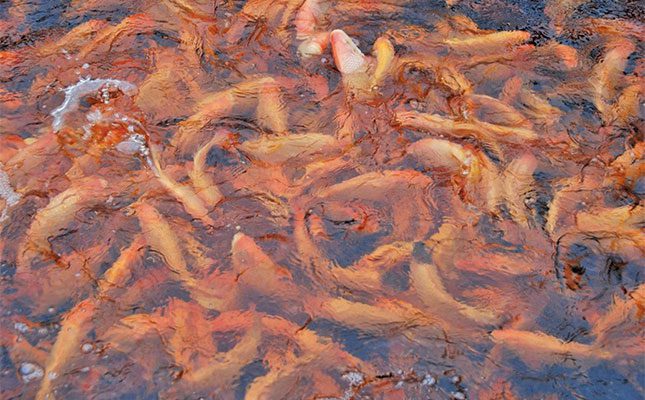A recirculating aquaculture system (RAS) is a network of interconnected fish tanks that operates as a unified system. This setup includes essential components such as filters, aerators, and water pumps. RAS systems offer significant advantages over traditional aquaculture methods, particularly in regions with fluctuating climates, especially in temperate areas.
In an RAS, fish are fed and, as they grow, they consume oxygen which is replenished by aeration. At the same time, the carbon dioxide they release is also removed through the same process. Fish digest their feed and excrete both solid and dissolved waste into the system.
Water Movement and Waste Management
Water circulates continuously through the fish tank, carrying solid waste to mechanical filters where it is trapped. These filters require regular cleaning, typically daily, to prevent waste accumulation and maintain water quality. If left unchecked, the waste would build up, negatively affecting the system.
The dissolved waste primarily consists of ammonia, which is harmful to fish. However, a biological filter converts the ammonia into nitrate, a less harmful substance that can safely accumulate in the system. This biological filtration process is vital for maintaining a healthy environment for the fish.
To further maintain water quality, daily water changes (approximately 10% of the system’s volume) occur when cleaning the mechanical filters. This keeps nitrate levels at a safe range for fish health.
When farming sensitive species or juvenile fish in hatcheries, aquaculturists sterilize the recirculated water. This sterilization process reduces microbial concentrations, which could harm the fish. Failure to sterilize hatchery water can result in high mortality rates and slowed growth.
Environmental Control in Greenhouses
A recirculating aquaculture system can be set up inside a greenhouse to provide insulation and passive heating, ensuring the fish remain in a temperature-controlled environment. In colder climates, this allows for optimal growth even when external temperatures are not ideal.
Although installing an RAS is more expensive than setting up traditional earth ponds or cages, it offers significant benefits. The filtration and aeration capabilities enable large-scale fish production in compact spaces, reducing water consumption and land use. This makes it possible to place the system in structures like warehouses or greenhouses, providing insulation from temperature extremes.
These temperature-controlled systems allow for the farming of species outside their natural temperature ranges. For instance, rainbow trout, which thrive at 16°C, can be successfully farmed in regions like South Africa, where the air temperature often exceeds 40°C, by maintaining the water temperature within their optimal range.
Similarly, tilapia, which require warmer temperatures around 28°C, can be farmed in an RAS system, provided the temperature is carefully controlled.
Sustainable Feed and Nutrient Recycling
In an RAS, fish are solely dependent on the feed provided, making it crucial to use high-quality, species-specific food. As the filters are cleaned, the nutrient-rich waste is removed, a byproduct once seen as waste but now recognized as a valuable resource.
By integrating an aquaponics system, the nutrients from the fish waste can be utilized to grow plants. This symbiotic relationship benefits both the fish farm and the plant cultivation process, with the plants often generating more income than the fish. The fish waste serves as fertilizer for the plants, while the plants purify the water that is returned to the fish tanks.
Efficient Water Use and Location Flexibility
RAS systems are known for their low water usage and small physical footprint, allowing them to be positioned almost anywhere, including regions with poor soil for traditional farming. This makes it possible to establish fish farms near urban areas, reducing transportation costs and logistical challenges.
Power Supply and Backup Requirements
Reliability in power supply is essential for the operation of an RAS. A solar power system with battery backup can be a practical solution where grid electricity is unreliable. In all cases, a backup generator with an automatic switch is a must-have to ensure uninterrupted operation.
Design and Expertise
While RAS technology is highly effective, proper planning and expert input are crucial when designing a system. Working with an experienced professional ensures that the system’s components are correctly sized for optimal performance. Additionally, experts will focus on energy efficiency and user ergonomics during the design phase to enhance both technical and operational outcomes.
In summary, while the initial cost of installing a recirculating aquaculture system may be high, its long-term benefits in terms of water efficiency, space optimization, and environmental control make it an attractive option for sustainable fish farming.


